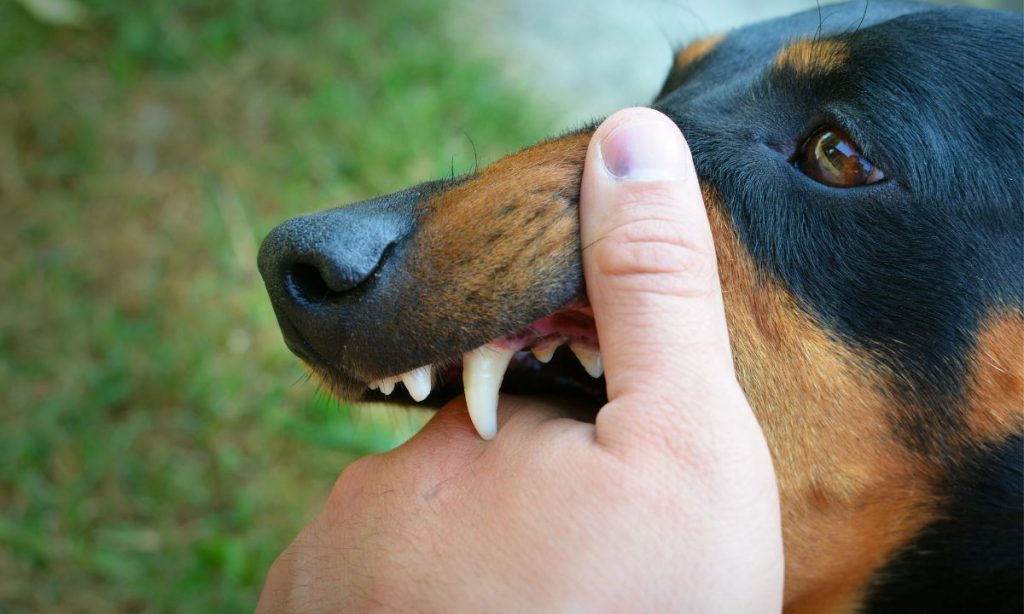Last Updated on April 25, 2023 by Dogs Vets
Can You Get Insurance if Your Pet is Sick Already?
If you have a pet that is sick or has a pre-existing condition, you might wonder if you can still get pet insurance to cover their future medical expenses.
The answer is not so simple, as different pet insurance companies have different policies and definitions of what counts as a pre-existing condition.
A pre-existing condition is any illness or injury that your pet had before you enrolled in a pet insurance plan, or during the waiting period before your coverage starts.
Some examples of pre-existing conditions are allergies, arthritis, cancer, diabetes, ear infections, urinary tract infections and hip dysplasia.
Most pet insurance companies do not cover pre-existing conditions, as they are considered too risky and costly to insure.
However, some companies may make exceptions for certain conditions that are curable or temporary, such as bladder infections, diarrhea or vomiting.
These conditions may be covered if your pet has been symptom-free for a certain period of time, usually between 6 and 12 months, depending on the company.
Some pet insurance companies also have bilateral exclusions, which means that if your pet has a problem with one body part, such as an eye or a leg, the same problem on the other side will not be covered, even if it occurs after you enroll in the plan.
For example, if your pet has a history of cruciate ligament injury in one knee, any injury to the other knee will be considered pre-existing and excluded from coverage.
The best way to avoid pre-existing conditions exclusions is to get pet insurance as soon as possible, preferably when your pet is young and healthy. This way, you can ensure that any future illnesses or injuries will be covered by your plan.
However, if you already have a pet with a pre-existing condition, you may still be able to find some coverage options that can help you with their veterinary bills.
Some pet insurance companies offer accident-only plans, which cover injuries caused by accidents such as falls, bites or car accidents.
These plans do not cover any illnesses or diseases, but they can still provide some financial protection for unexpected emergencies. Accident-only plans are usually cheaper than comprehensive plans that cover both accidents and illnesses.
Another option is to look for a pet insurance company that covers pre-existing conditions, or at least some of them. There are not many companies that offer this option, but they do exist. For example, Petsure is a UK-based company that offers up to £15,000 vet fees coverage for all pre-existing conditions*, with no compulsory excess or upper age limit.
However, these plans may have higher premiums or lower payouts than standard plans.
Before you sign up for any pet insurance plan, make sure you read the terms and conditions carefully and understand what is covered and what is not.
You should also compare different quotes from different companies and choose the one that best suits your budget and your pet’s needs.
Pet insurance can be a valuable investment for your pet’s health and well-being, but only if you choose the right plan for them.
The cost of your pet’s veterinary treatment may even be exorbitant.
Most pet owners love their animal companion like a part of the family, so having to deal with a medical emergency without the money to pay for pet insurance, treatment, and preventative care is a nightmare scenario.
Many pet owners get medical insurance for their canines in the hope that they won’t have to make such a challenging choice.
But is it really that easy? Pre-existing illnesses are they covered by pet health insurance?
Like human health insurance, even the best pet insurance is rather limited and frequently excludes coverage for pre-existing diseases as well as a number of other circumstances you might not be aware of.
Continue reading to learn what pet health insurance covers, what it excludes, and some notable exclusions.
Are Pre-Existing Conditions Covered by Any Pet Insurance Policies?
There are few exceptions to the general rule that pre-existing conditions are not covered by most pet insurance plans. It all stems from the insurance company’s definition of pre-existing conditions.
The most typical ailments and problems, whether they are regarded as pre-existing, and how that influences whether they are covered are listed below.
What is a Pre-existing Illness in Pets?
A pre-existing health condition is a sickness, ailment, or illness that your pet had before you got health insurance.
Additionally, the great majority of pet health insurance policies do not pay for treatment of pre-existing diseases. The majority of insurance policies also include an initial waiting period.
During the waiting period, which might be several weeks or months, any medical condition that develops is deemed to be pre-existing and is not covered by your just purchased insurance.
This waiting time is in place because medical issues that present gradually may already exist before coverage is purchased but go undetected for weeks or months.
What are Bilateral Conditions?
Additionally, your pet’s newly discovered bilateral problems could not be covered. For instance, if your pet has hip dysplasia in one hip, it is a pre-existing ailment that is not covered by recently purchased pet insurance.
Due to the abnormalities in the prior hip, the new hip is regarded as a pre-existing problem if it subsequently develops hip dysplasia despite your pet never having it there before.
If a pet has had orthopedic issues or sickness on one side of the body but not the other, pet parents should be aware of limitations like these before purchasing pet health insurance for their pet.
What are Previous Symptoms in Pets?
Additionally, illnesses in your pet that appeared before to coverage but were not identified or treated, or symptoms in one part of the body that recur in the same place, may be considered pre-existing and not be covered by an insurance policy for medical costs.
A gastrointestinal symptom that is ignored as resolved without treatment and later your pet develops a gastrointestinal disorder that the previous symptom is linked to, for instance, may be regarded as an indication of a pre-existing disorder and not be covered.
Another example would be an injury to your pet’s shoulder that later results in orthopedic strain in the same limb.
Are There Exceptions to Pet Insurance Policies for Pre-Existing Conditions In Pets?
If a pre-existing condition was “curable” and successfully treated before insurance was purchased, some firms will cover it. In this situation, coverage could be available if the disease reappears.
A successful treatment and resolution of an eye infection would serve as an illustration.
If your pet develops another eye infection after purchasing pet insurance and a suitable amount of time has passed, the second illness may be covered and treated as a new event rather than a recurrence.
If this is the case and if it is a worry for you and your pet, you should carefully review the coverage you are purchasing.
Conclusion:
Getting coverage sooner rather than later may be wise since as our canines mature, more and more problems will be labeled as pre-existing.
While some plans only cover medical treatment for illnesses or accidents, others offer basic medical care.
These plans have various prices. Researching the coverage that best matches your requirements and those of your pet is advised because what is and isn’t covered differs between providers and policies.
The following conditions are either covered by certain insurance policies or not:
- Serious illnesses having a terrible prognosis, such cancer or heart problems
- Arthritis and orthopedic conditions Allergies
- Diabetes and other endocrine disorders
- Hereditary conditions
Questions People are Asking
Is it too late to insure a dog?
Progressive Pet Insurance by Pets Best has no age restrictions, so your senior pet can be enrolled at any age. Older dogs and cats are more likely to require medical treatment and may thus incur higher insurance costs.
Does pet insurance exclude pre-existing conditions?
Typically, pet insurance policies do not cover pre-existing conditions. These are injuries or diseases that occur or manifest symptoms prior to the plan’s effective date or during the waiting period.
Is vomiting considered a pre-existing condition for pet insurance purposes?
Here are some instances of typical pre-existing diseases that are treatable: Irritability or diarrhea. Urinary tract or bladder infections. Respiratory illnesses.
Can I acquire pet insurance before diagnosis?
Yes! Even without a diagnosis, symptoms that are documented before a pet is insured can be deemed pre-existing conditions. However, it also important whether the symptom indicates a treatable or incurable condition.
What qualifies as a pre-existing condition?
A health condition, such as asthma, diabetes, or cancer, that you had prior to the effective date of your new health coverage. Insurance companies cannot refuse to cover your preexisting condition or charge you more for treatment.
What types of insurance can be denied on the basis of pre-existing conditions?
Pre-existing conditions, such as asthma, diabetes, or cancer, as well as pregnancy, are no longer grounds for increased premiums or denial of coverage by health insurance companies. Neither can they limit benefits for this condition.
What is the duration of a pre-existing condition for pet insurance?
How pet insurance define pre-existing conditions, including the amount of time an illness is considered pre-existing, varies each insurer.
Some policies will enable you to purchase coverage if your pet has not received treatment for the ailment within the prior three months, while others will extend this period to at least two years.
Are you immediately insured by pet insurance?
Unless your policy indicates otherwise, you will not be allowed to file a claim immediately after obtaining pet insurance. Typically, you must wait at least 14 days – this is referred to as the exclusion period.
Does pet insurance take effect instantly?
The majority of pet insurance providers cover preventive care without a waiting time. Typically, accident coverage begins earlier than illness coverage. Most pet insurance policies provide accident and illness protection within 14 days (although some plans can take as long as 30 days).
Facts Check
We hope you enjoyed this article… What are your thoughts?
Please feel free to share this article!

















